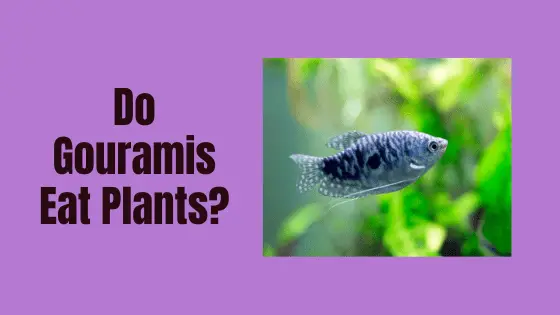Having lovely green aquatic plants in your fish tank is one way to add interest, colour, and also contrast to the lovely colours of your fish. However, having plants in your fish tank isn’t just aesthetically pleasing. Live plants are an important part of your aquarium’s eco-system, and even fake plants serve a very important purpose.
I can’t think of any breed of fish where plants are of no benefit to them in one way or another.
In this article, I am going to discuss the benefits of having plants in your aquarium, the best beginner plants to go for, and whether gouramis will eat the plants in your tank.
Benefits of a Planted Aquarium.
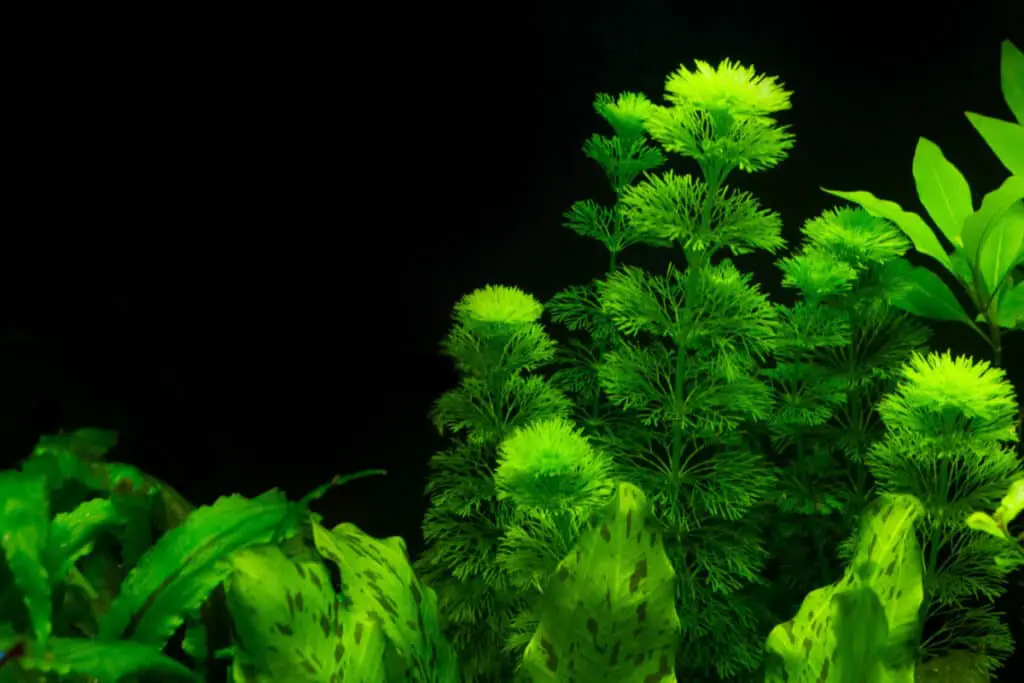
It is very rare to come across a fish tank in that just has fish in it and nothing else.
The main benefits of having a planted tank are:
It is an important part of your tank’s eco-system.
I love National Geographic’s definition of an eco-system:
‘An ecosystem is a geographic area where plants, animals, and other organisms, as well as weather and landscape, work together to form a bubble of life.’
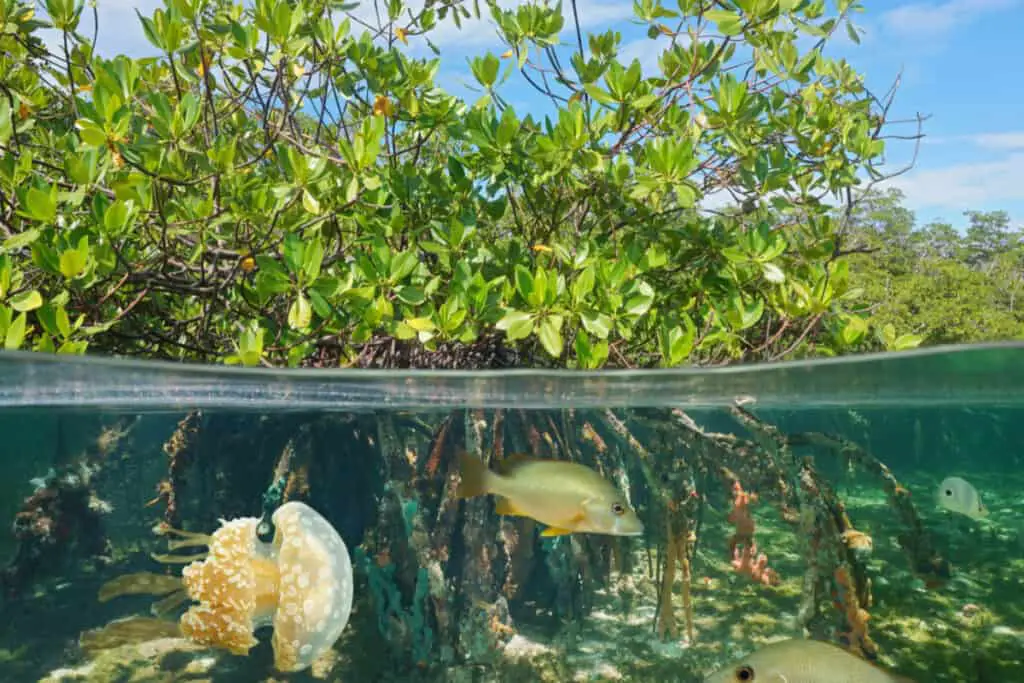
Our fish tanks are tiny little eco-systems compared to the natural ones ‘out in the wild’, but they are just as important. It is the circle of life in our own little glass box.
Plants help control nitrogen levels, by consuming ammonia and nitrates. They also provide much needed oxygen in the tank. This all helps maintain the quality of the water that your fish need.
Bubble nests.
Plants, and especially floating plants, play an important role in a fish tank containing gouramis.
Floating plants are used by male gouramis when they are constructing their bubble nests for the eggs to go into.
A bubble nest acts as a layer of protection around the eggs until the fry hatches. The nests are made out of air and mucus, and the male gouramis will anchor the nest to a floating plant. This is because the female’s eggs will naturally float due to their oil content.
This short video shows a dwarf gourami building a bubble nest. You can see how he has incorporated floating plants into it.
They look good!
Having a planted tank looks much better than just having a tank with water and a few fish in! They can also help show the colours of your fish off better.
Aquascaping is a massive thing for some hobbyists, and you only have to look online at some of the amazing set ups people have created.
There are also people who don’t actually add fish to their tanks, they just put plants in!
What do Gouramis Eat in Their Natural Habitat?
Gouramis are omnivores, which basically means they will eat anything plant or meat based.
In their natural habitat, gouramis will feed on small insects, insect larvae and algae. Some of the bigger gouramis will eat small fish and crustaceans.
What is the Best Food to Give Gouramis?
I feed my gouramis good quality tropical fish flakes first and foremost. The flakes have all the vitamins, minerals and nutrients that tropical fish need, so this is the most important things to give them.
I also like to give my gouramis these freeze-dried bloodworms as a treat. Don’t forget you need to soak them in a little aquarium water for half an hour first to re-hydrate them before feeding them to your fish.
Instant baby brine is also a great treat for them. This must be kept refrigerated though or it goes disgustingly off!
The key is to make sure your gourami’s diet is varied so they are getting their essential nutrients from different sources.
Do Gouramis Eat Plants?
Gouramis are omnivores so will eat food of both plant and animal origin. However, they are more likely to pick at any tiny specs of algae on aquatic plants, rather than eat the plant itself.
Best Plants for Gouramis.
The main benefits for gouramis being in a planted tank are for shelter, hiding spots and the construction of their bubble nests.
Having a bubble nest in amongst floating plants make it easier for the male gouramis to protect their fry as the plants anchor the nest, as well as providing cover from any other fish in the tank.
The following are all good choices for planting in a gourami tank:
Java Fern

Java fern should be attached to something rather then put into the substrate, a piece of rock or driftwood would be perfect for them. They have quite long leaves, and can grow up to approx 30cms if not regularly trimmed. They are very hardy and just need some light to help them grow.
Crystalwort.

Crystalwort is a floating plant and it grows in little balls, just below the surface of the water. Gouramis will often build their bubble nests within this plant as it provides good cover from any hungry fish.
Hornwort.
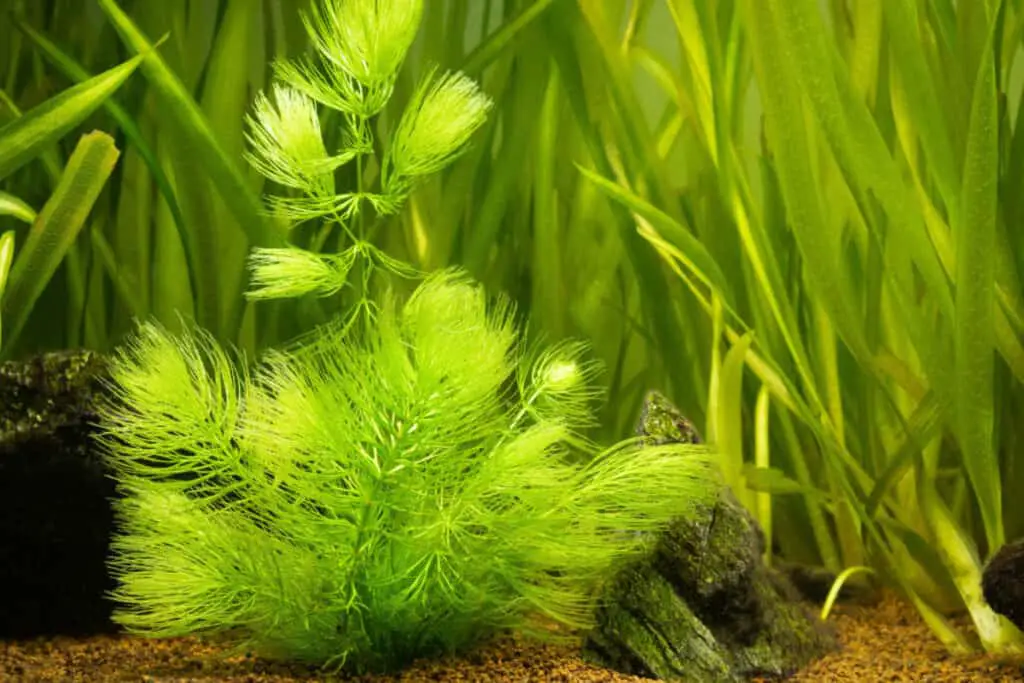
Hornwort is one of the best plants for beginners as it is the easiest thing to grow. You would have to be particularly rubbish to kill off a hornwort plant!
It can be used as a floating plant, or can be put into your substrate.
Hornwort is a great hiding place for newly hatched gouramis as they can get right into the middle of the plant, away from any hungry mouths.
Amazon Frogbit.

Amazon Frogbit look like little mini lilypads when floating on the surface of the water. This is another popular choice of floating tank when housing gouramis as their sturdy leaves provide a good anchor for bubble nests.
Anacharis.
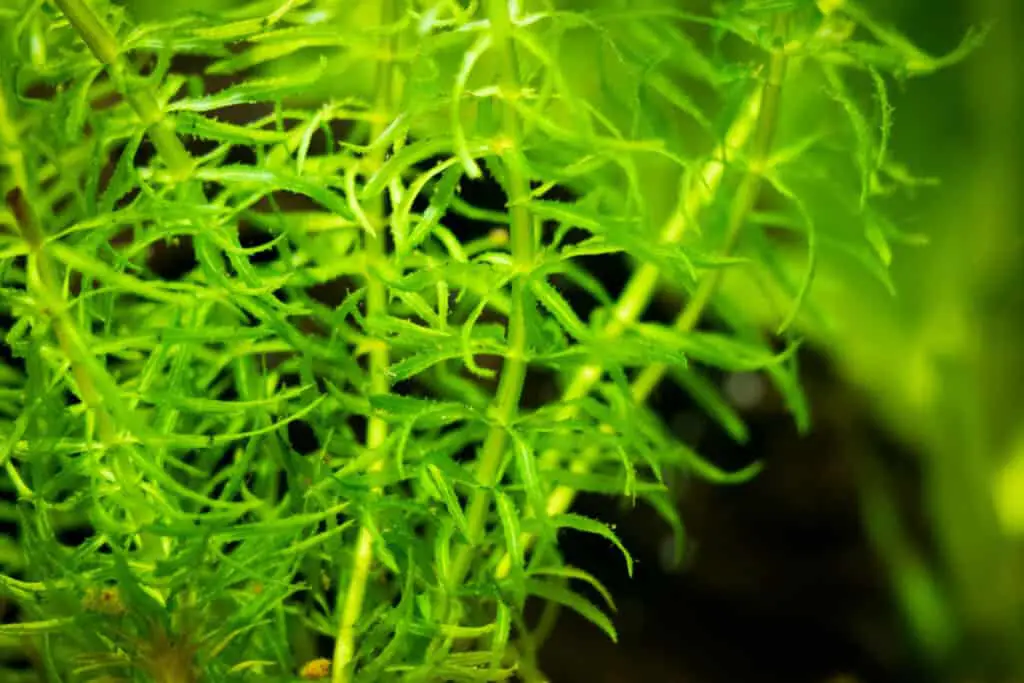
Anacharis (also known as elodea) is basically a waterweed, and grows at about the same rate as one! It is very hardy, can grow many feet if left to its own devices, and is a lovely, bright green colour, so always brings a lovely pop of colour to your tank. It’s another great hiding place for smaller gouramis as well.
Cabomba.
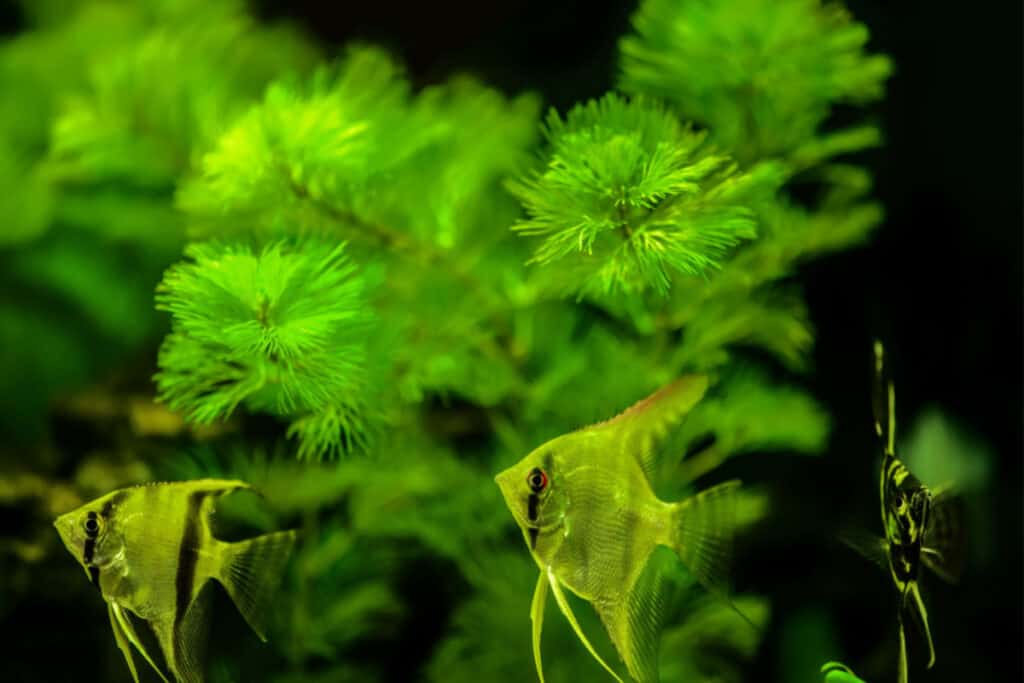
Cabomba is another popular choice for hobbyists, but you have to careful if you have gouramis as this is a popular go to plant for shredding to help make their bubble nests. Only put cabomba in your gourami tank if you have floating plants in there as well. That way, the males won’t need to rip it apart.
Cabomba is planted into the substrate but is best being weighed down at first until the roots have found something to attach themselves to. This is another plant that can grow very tall if left unattended so you will need to cut this back regularly to keep it under control.
Anubias Nana.
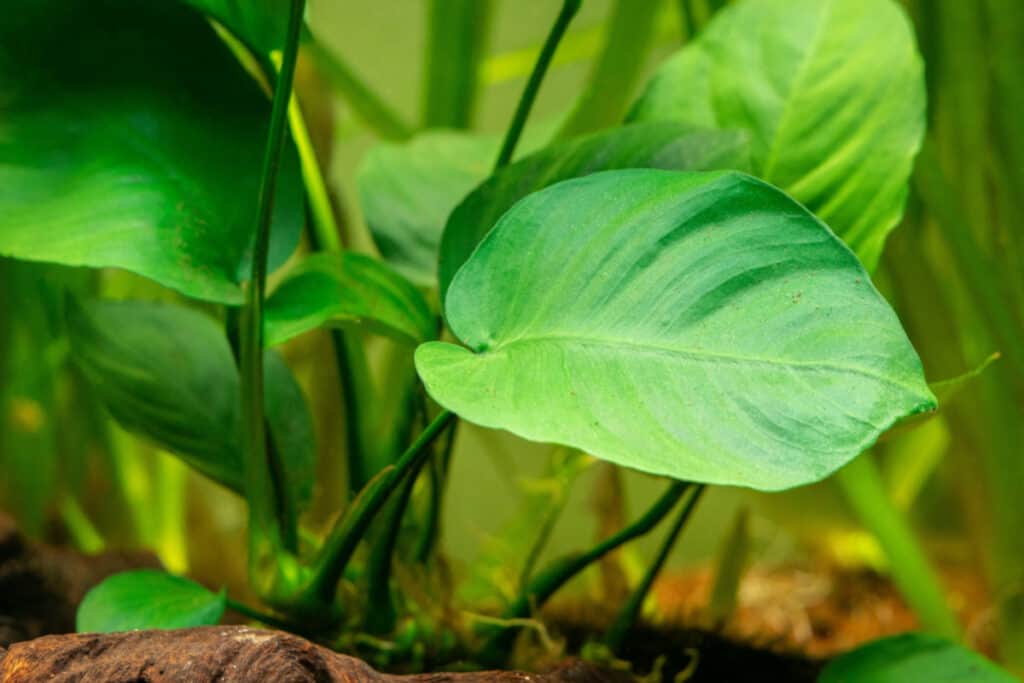
Anubias Nana grows slower than the previous plants I have mentioned, which may come as a relief to you! People refer to this plant as a plastic plant due to the appearance of their large, thick leaves. It only grows to around 10cms and provides lots of hiding places underneath their big leaves for any gouramis that want a few minutes to themselves.
Conclusion.
Whilst gouramis aren’t known for eating plants in their fish tank, they have been known to rip some apart to use for constructing bubble nests.
Floating plants provide an anchor for their bubble nests. It is important to have floating plants to stop your gouramis ripping up any substrate plants.
I hope this article has helped you. If you are still undecided about putting live plants into your fish tank, maybe start with something like hornwort in the substrate, and then Cystalwort as a floating plant. Both of these plants are super easy to look after. Your local aquarium should have a good selection of aquatic plants, and will be able to give you advice on what they think is best as well.
Related Articles:
How to stop a bullying gourami
Why is my gourami staying at the bottom of the tank?
What are the whiskers on a gourami for?
How many gouramis can I put into a tank?
Video on How To Set Up a Fish Tank with Live Plants.
This video from Irene at Aquarium Co-op walks you through how to set up your fish tank with live plants. It is well worth a watch.

